September is nearly half over. The rain our plants and soil needed has arrived. Intermittently, it falls today. The entire Saturday seems gray: from the silvery drizzle that fell as I worked in my garden this morning, to the gray clouds blanketing the sky, and the way those clouds, in obscuring the sun, leach color from the world below. The green of leaves, the yellow of sunflowers, and even the hot pink of pokeweed appear muted and dark, as though a shadow lies across the entire landscape. Even the air seems gray. After three days of gloom, the warm and sunny first half of this week feels like it was ages ago.
Just six days ago, I stood under a sunny sky staring at the bright blossoms of a dense row of partridge peas, hundreds of large soft yellow petals that fluttered like butterflies’ wings. Wasps and bees buzzed among the flowers. The little patch of partridge pea, near Lake Erin at Henderson Park, was a pocket of pure happiness.
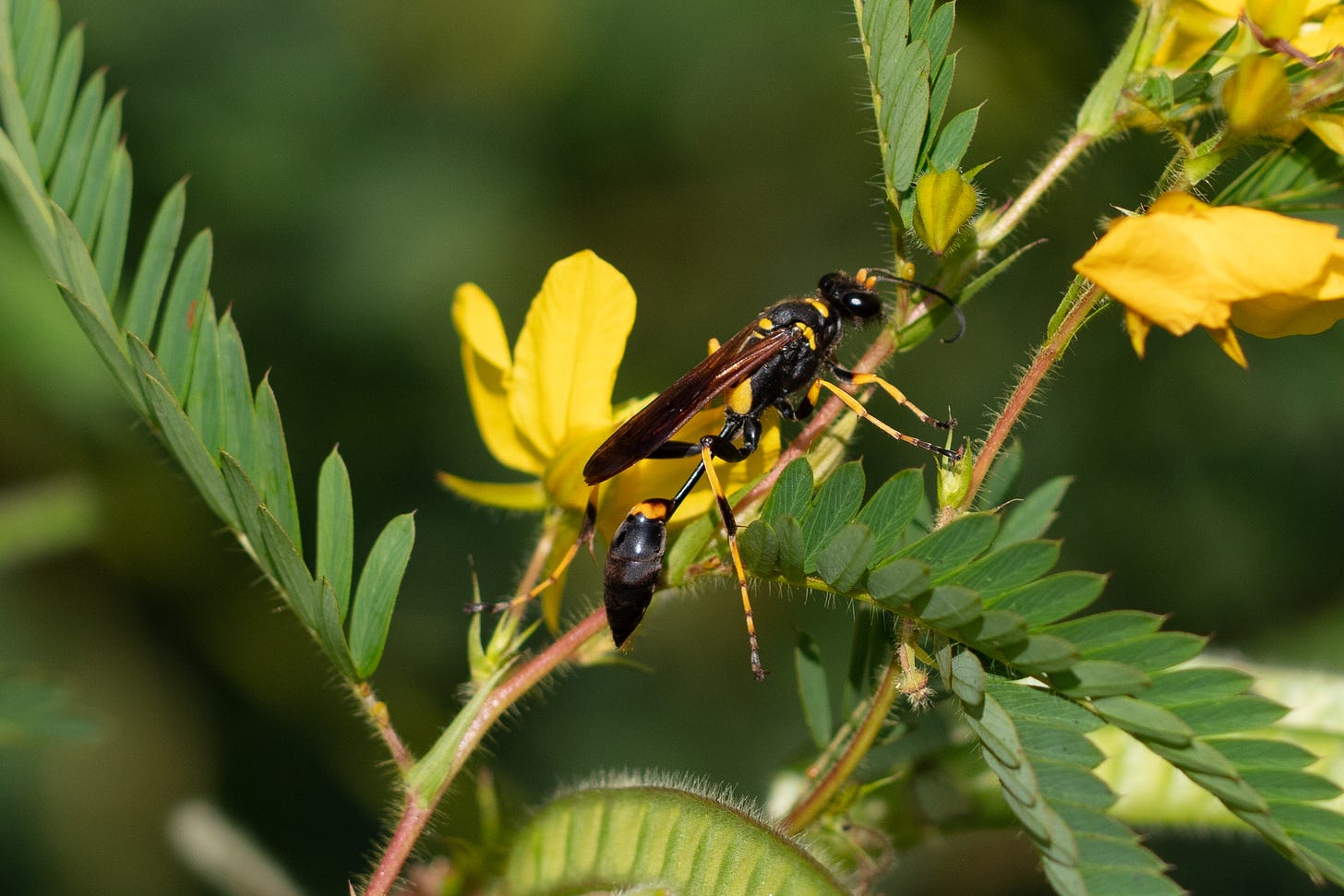
My favorite find on these flowers has been yellow-legged mud dauber wasps, a striking species that is long and thin with a long and even thinner threadlike waist, yellow markings on a black body, and long, yellow legs that match the partridge pea petals. As their common name suggests, these wasps sculpt nests from mud. They lay one egg in each cell of the nest, after they have provisioned it with paralyzed spiders — their young’s prey. They often build these nests on manmade structures, such as under roof eaves, to shelter them from rain; rain could destroy a mud sculpture nest.
I find fascinating the artistry of arthropods, even though survival, not art, is its function. I’ve never seen the nests of the yellow-legged mud-dauber wasp, but I’ve seen the rows of clay tubes sculpted by the organ-pipe mud-dauber wasp. I delight especially in the discovery of the wide-based, narrow-necked vessels created by potter wasps. The silk constructions of spiders, especially the rows of ZZZZZZZ’s etched by yellow garden spiders; the intricate curves and lines of bark beetle damage on dead wood, a destructive beauty that I imagine as writing in a strange script; the white squiggles and blotches that leaf miners etch as they make their way between layers of leaf tissue — I love it all. Noticing these and learning to identify them (even when their creator is not present) has enriched all of my time outside. Once I started to see these tracks, constructions, and signs, I gained a new layer of awareness of the life around me, even in developed, city spaces. Learning to notice and recognize the small, wild things makes every space fascinating — a potential source of discovery — and in a way, less lonely. While I will not make friends with the insects, it is comforting to be aware of their presence; I feel a sense of companionship while we exist in a shared space.
Since it was Gall Week, I was on the lookout for such things. On the edge of Lake Erin, pink bumps pimple the surface of a willow’s slender leaves; these are galls caused by the feeding of tiny mites [appropriately called the Willow Bead Gall Mite (Aculops tetanothrix)] who spend part of their lives inside the tissue of willow leaves. Short tulip poplars also grow on that lake’s shore. On the bright green leaves of those tulip poplars, a tiny fly has painted small brown circles. What first drew my attention to the creations of Resseliella liriodendri, the Tulip Tree Leaf Spot Gall Midge, was a cloudless sulphur resting under the surface of one of the tulip poplar leaves during a previous visit to Henderson Park. The color of sunlit leaves nearly matched the bright chartreuse of the butterfly’s wings, which also had round, brown spots — like a smaller version of the leaf spot galls!
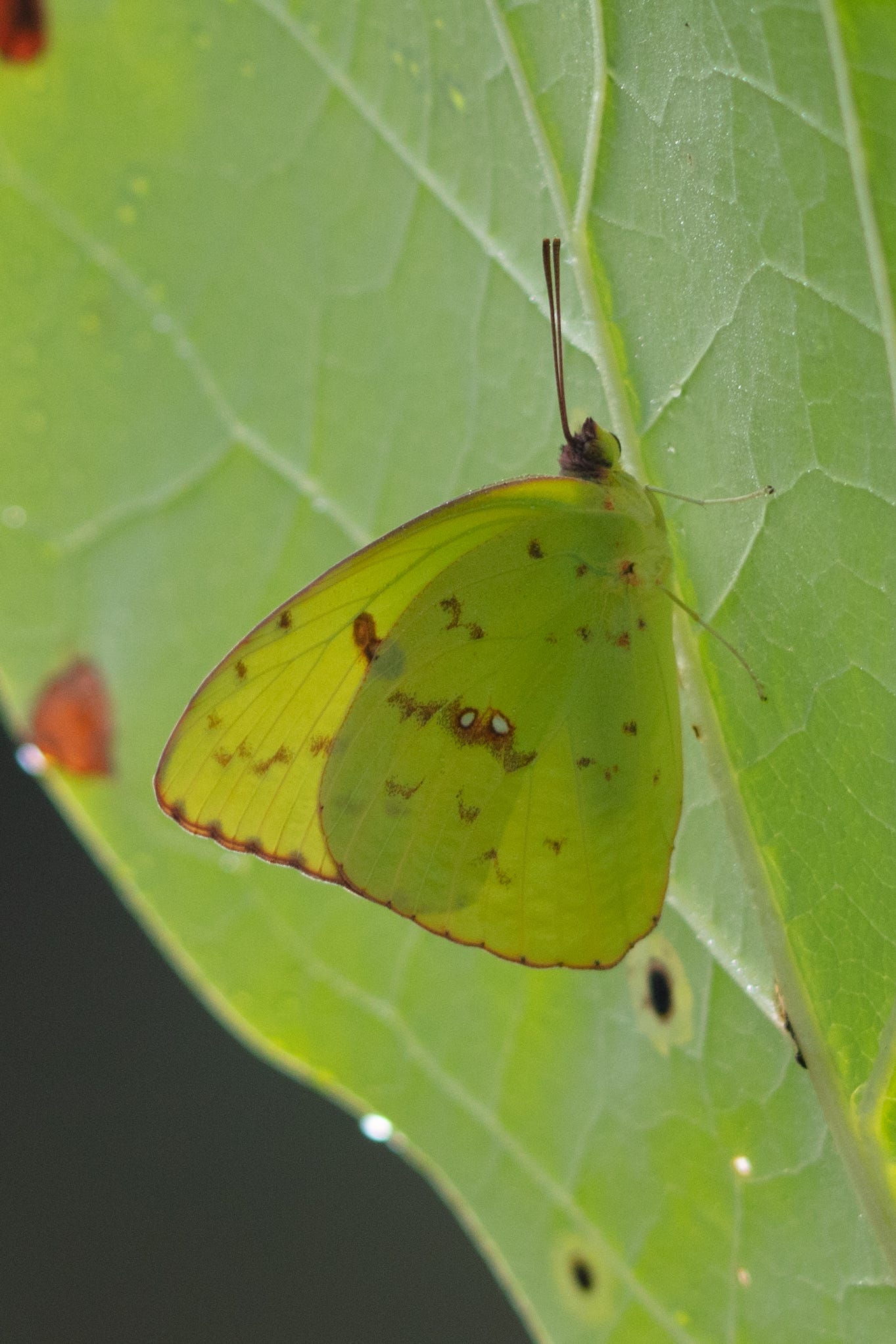
Later that day, I spent hours on the porch writing and editing photos; it was warm, but not too humid to work comfortably on the porch, and a breeze kept the mosquitoes away. As the day faded to evening, I watched the fast, intersecting flights of chimney swifts across a blue sky, while large cumulus clouds glided slowly across that same blue space. The waning sunlight painted the clouds a pale gold.
With a loud series of buzzy squeaks, a hummingbird burst from the greenery of the Chickasaw plum tree by the back porch, shooting up in the air before arcing back down to rest on a branch. He turned his head from side to side, sharp gaze taking in the sights below, before calling out with the same buzzy squeak, lifting from the branch, and dropping back down into the plum tree’s leaves.
Another hummingbird appeared suddenly on a high branch; then the first emerged from the shadows, joining the second. The two flew up above the tree and sped across the driveway, to the front yard and out of view. Moments later, they returned, a pair of black silhouettes zipping over the driveway, into the backyard and over the plum tree, and then across the backyard. They disappeared in the shadowy foliage of the tall water oaks that line the back fence, where the pale gold sun slowly sank towards the horizon. The sunlight spread out behind the trees like a viscous liquid, as though the sun were a broken egg yolk, slowly losing solidity.
A single thin branch of my backyard elm tree bobbed in an otherwise imperceptible breeze. The sun disappeared from view. Over the rumble of an air conditioner came a buzzy beep as a shadowy blur barreled towards me. Its white face became clear as the blur flew closer — the hummingbird had returned.
The second hummingbird darted in from my left, and the two hovered in the air, regarding one another for just a second, before quickly arcing back towards the plum tree. One disappeared into the leafy shadows, while the other flew to the highest branch and stopped. He lifted his head, pointing his bill towards the sky like a triumphant sword. Behind him, the golden clouds and the pale blue sky gradually grayed, as though absorbing the dark of the coming night.
Upcoming Events and Community Science
Tomorrow, September 15th, is the last day of Gall Week. You still have time to look for insect art and other abnormal plant growths caused by other organisms! Check out this rust I found on ironweed leaves the other day! It looks like neon orange spots!
A week from today, September 21st, is the Bioblitz at Cochran Shoals. Other than the parking fee ($5, free with an America the Beautiful pass), this event is FREE!
Two weeks from today, September 28th, is the Georgia Botanical Society’s Wildflowers of Sandhills WMA field trip. This event is also FREE! I wrote about the 2022 fall Sandhills trip in An Introduction to Falling in a Bog and have been working on another post, with photos, about the Taylor County Sandhills — one of my favorite places in the world. I hope to have it finished by next week, to encourage local readers to sign up for the trip! Bot Soc has a lot of great trips coming up!
UPDATED 1/26/2025
Here is the aforementioned post about the Taylor County Sandhills:
and here is the post about the above-mentioned September 28th Wildflowers of Sandhills WMA field trip:

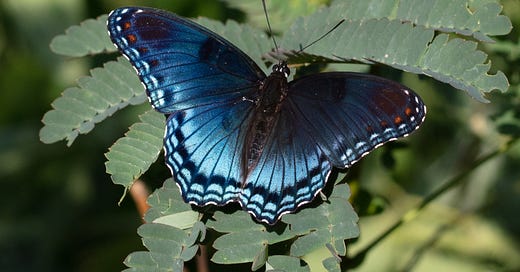



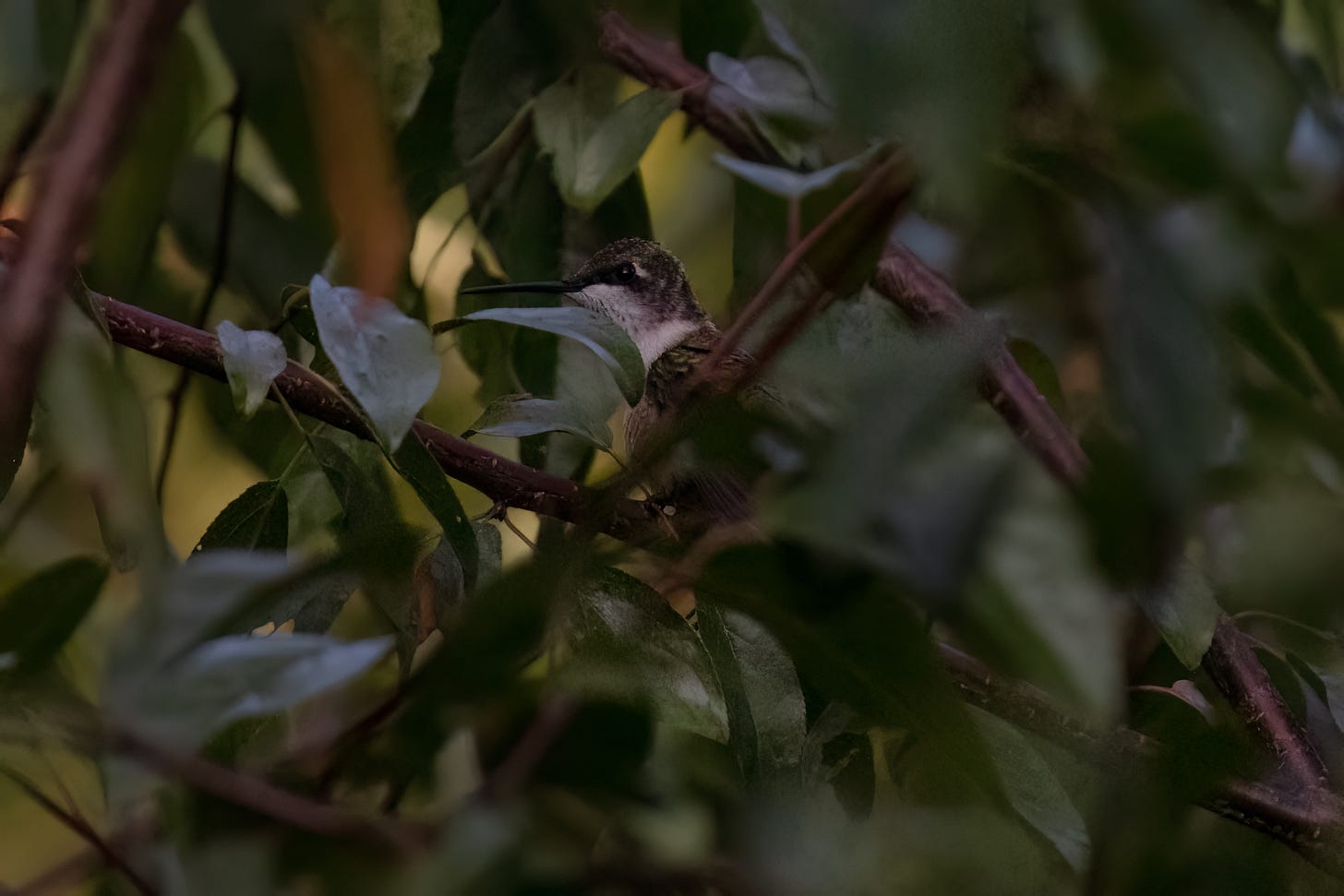
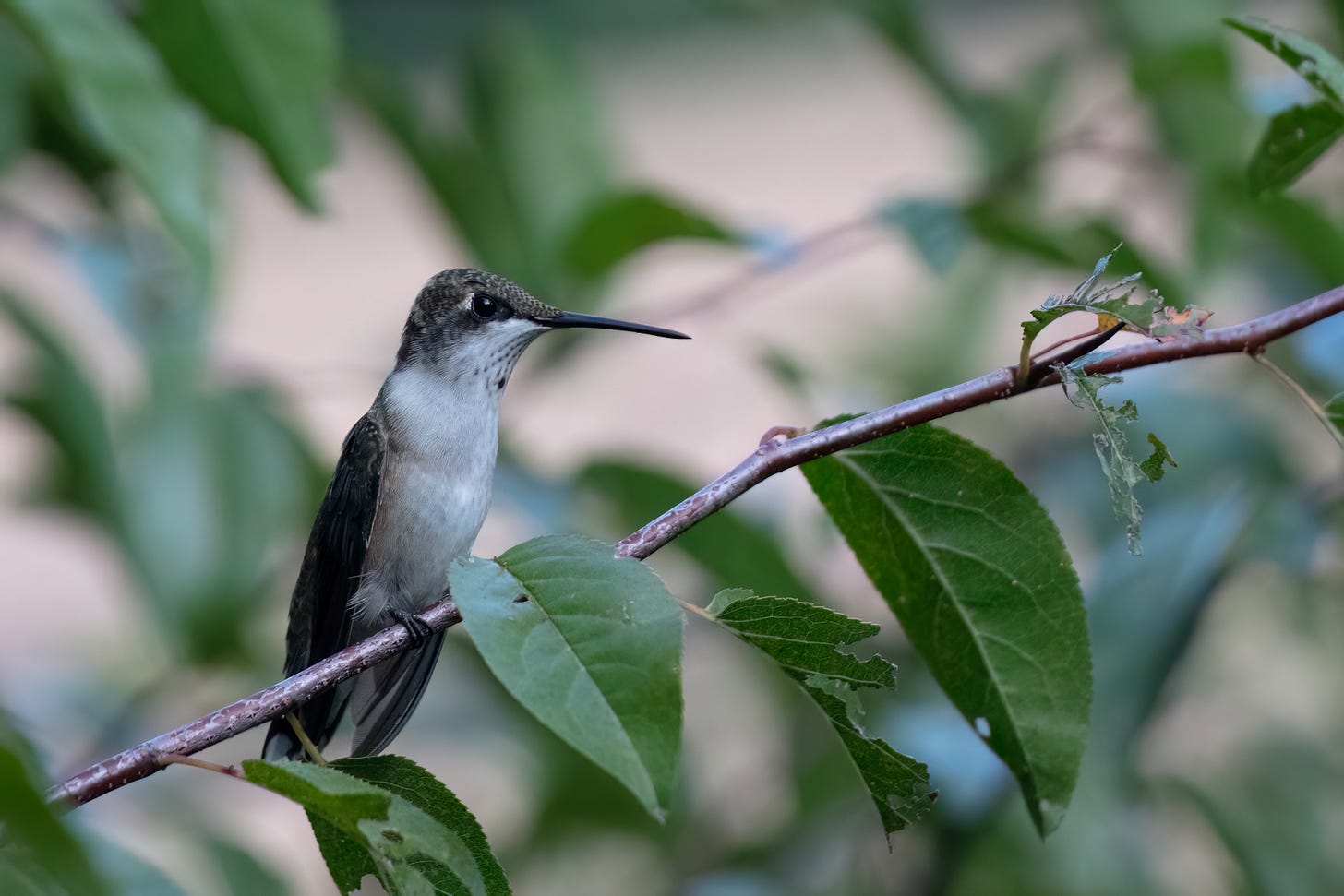
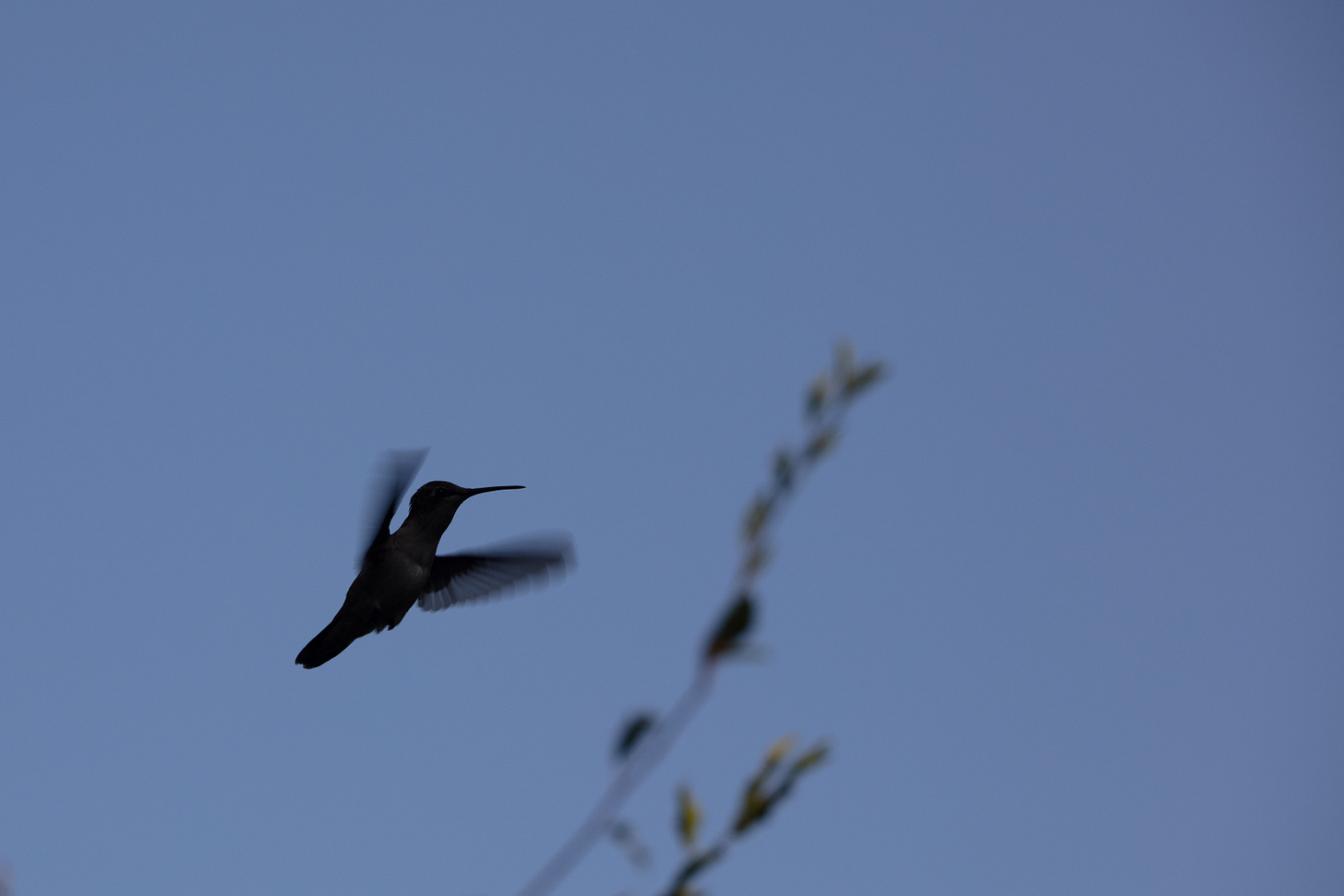
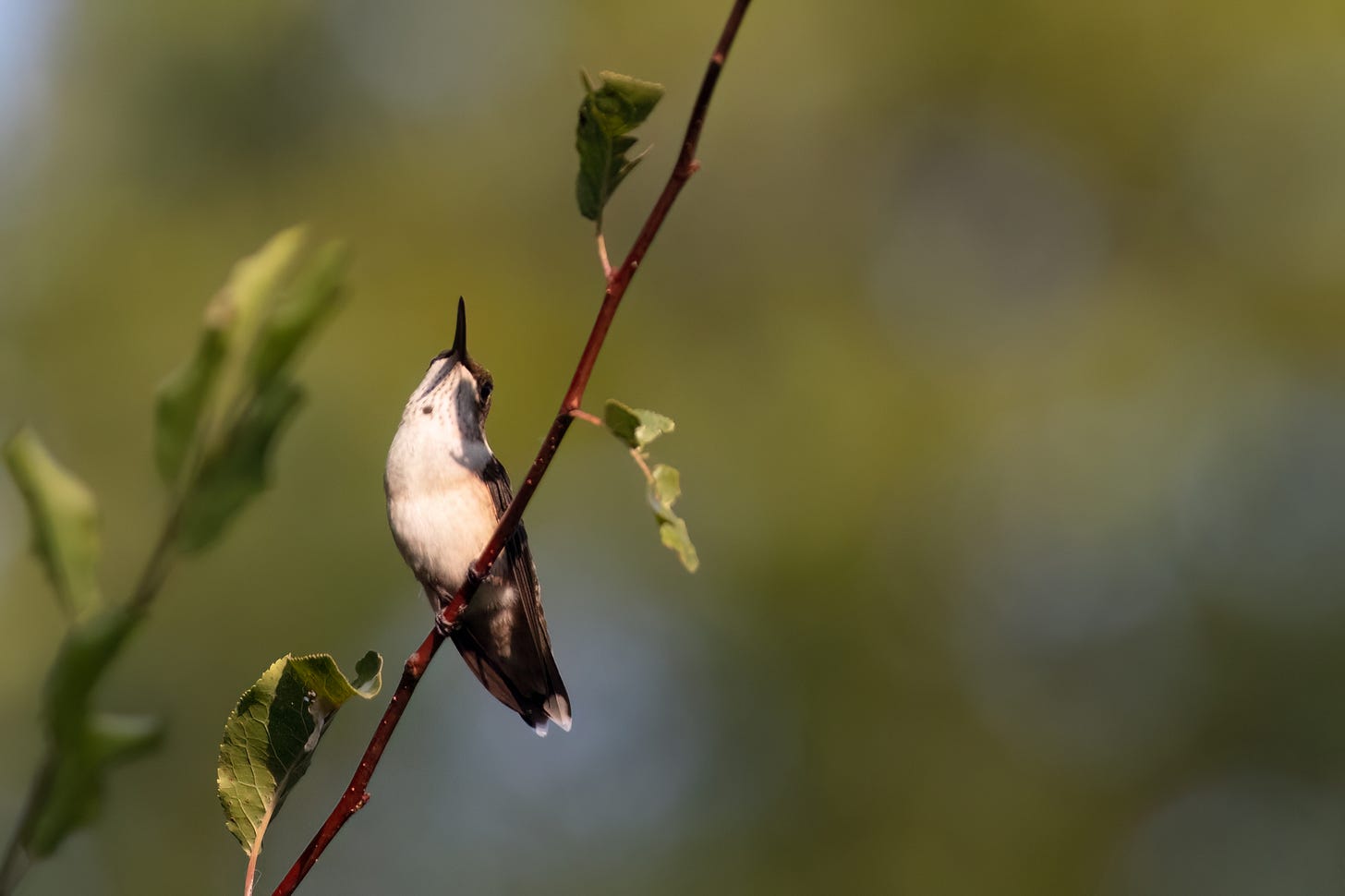

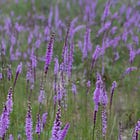
Such a beautiful post... and amazing photos too. I have also been enjoying the companionship of small beings, most notably an orb weaver (maybe a barn spider?) that has been spinning and re-spinning her web near the back porch light just outside our bedroom. I could watch her for hours.